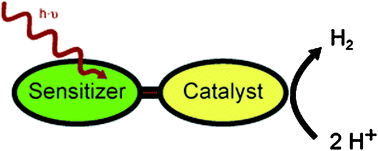Henning Krassen, Sascha Ott and Joachim Heberle
Phys. Chem. Chem. Phys., 2011,13, 47-57
DOI:
10.1039/C0CP01163K,
Perspective
Using solar energy to produce molecular hydrogen is a promising way to supply the civilization with clean energy. Nature provides the key components to collect solar energy as well as to reduce
